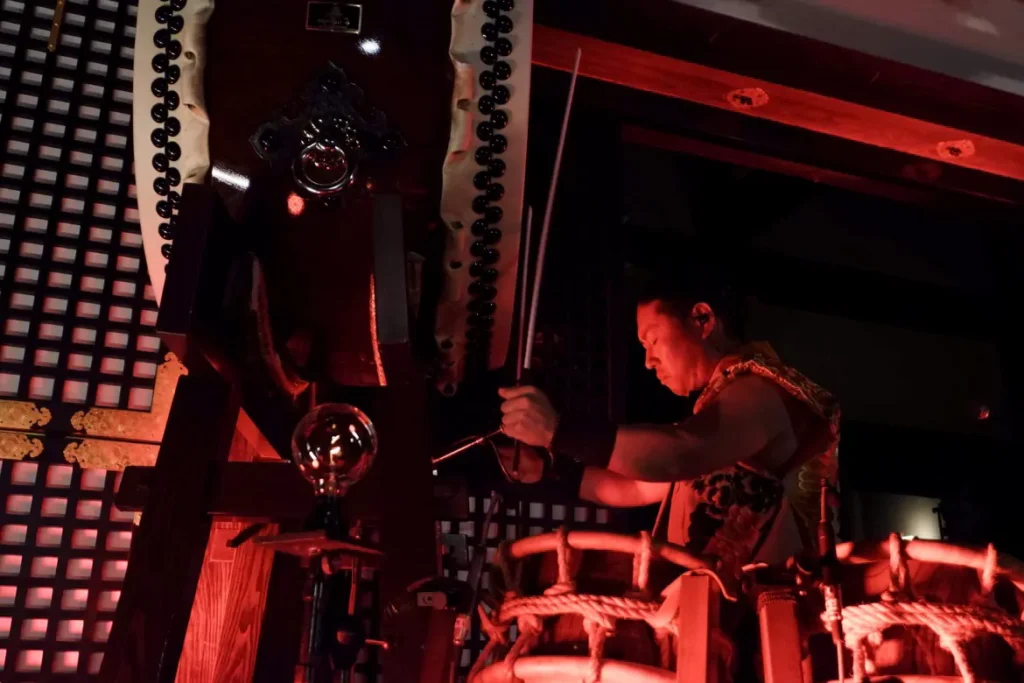Everything you need to know to shop, from materials to brands
Taiko drum purchase: a musical instrument and a cultural carrier
Taiko drum is Japan’s most representative traditional percussion instrument with a cultural accumulation of thousands of years. From ancient festivals to contemporary stages, this instrument has always been a bridge between traditions and modernity. The selection process, for fans looking to buy Taiko drums, is really a process of developing a deep dialogue with this cultural heritage.

Cultural cognition determines in what direction choice is made
1.1 Taiko itself contains more than 200 kinds of Taiko drum
The diameter ranges from 30 cm to 2 m. There are each Typ of Taiko drumm that represents a cultural scene: The Palace Taiko drumm are mostly used in the shrine sacrifices, Nagado Taiko drumm with the folk dance and Fufu Taiko drumm with the new stage performance. By understanding these cultural symbols, buyers can better classify their needs accurately.
1.2 Extension of Modern Application Scenarios
However, the application scenarios of modern Taiko drums have long Chang have been broken. The “Drum Soul” performance at Tokyo Disneyland uses specially made electronic drums, and the Broadway musical “The Lion King” employs African-style modified drums. These types of innovations remind us that we need to consider possible scenarios for future use after purchase.
Taiko materials code science core elements analysis
The materials will have an impact on performance and service life of the instrument. Some insulating materials can vary almost 40% in their acoustic properties. The subtlety of the material research is that professional performers can identify the type of wood used in the drum body by the tone of the percussion.
2.1 Spectrum of drum woods (unit: decay time of sound waves)
| Wood Type | LF Decay (ms) | HF Decay (ms) | Applicable scenarios |
| Cypress | 850±50 | 300±30 | Traditional festivals |
| Beech | 720±40 | 420±25 | Stage performances |
| Oak | 950±60 | 250±20 | Recording studios |
| Maple | 680±35 | 500±40 | Modern fusion |
The low frequency ductility of cypress is most suitable for the creation of solemn atmosphere and the bright high frequency of maple is suitable for pop music arrangement in experimental data. In 2019 Tokyo University of the Arts in the acoustic study found that different moisture content of wood will produce ±15% timbre deviation, which is also why professional drum makers must control the aging process of wood strictly.
2.2 Drumhead materials from past to present
The drama here is between traditional cowhide and the contemporary synthetic:
Natural cowhide: With a thickness of 1.2-1.8mm: needs 90 days of natural air-drying. Top-grade cowhide has a tensile strength of up to 280kg/cm², but the humidity sensitivity can be large, and the pitch fluctuation range is ±3%
Synthetic fiber: CarbonMax series tensile strength305kg/cm² temperature adaptability: -20℃ – 50℃189Specifications: is particularly suitable for Touring performances.
According to comparative tests conducted by the Osaka Musical Instruments Research Institute, the pitch stability of synthetic drumheads in extreme environments is 42% higher than that of natural materials, but cultural purists still insist on the “life resonance” brought when strapping cow hides.

Purchasing Decision Tree: Four-Dimensional Evaluation System
3.1 Space adaptation rule
It is generally recommended that the Home practice of the selected for wall-mounted shock-absorbing bracket long-body taiko (long-30) 60-70cm diameter (area: 1.2m²)
Small performance (pay attention to the adjustment of floor load-bearing capacity, a single drum weight can be 80kg): attached Taiko set (3-piece set) adjustable height bracket
Professional recording tone: Use oak taiko, with resonance chamber adjstable function, sound-absorbing sponge circle
3.2 Ergonomic parameters
The golden ratio of height and drum body diameter is 1:0.38. A height of 170cm is good for a 65cm diameter drum body and the most desirable striking angle is 115°. The weight of the Bachi design (180g-220g) of professional drumsticks can not exceed the user’s wrist strength.
Taiko Drum Recommendation: Generational Collision of Craftsmanship
4.1 Traditionalists’ first choice
Miyamoto Seisakusho “Millennium Cypress” series
315-year-old cypress, air-dried for 7 years
No metal parts at all, standard rosin bonding cycle
Sound pressure is at 125dB, lows can go down to 45Hz
Target Group: cultural heritage institutions, traditional art inheritors
4.2 Representative of modern innovation
Yamaha Stage Custom Hybrid
Drum shell is composed of maple/carbon fiber composite
Built-in acoustic DSP sound system, Bluetooth sounded.
40% lighter, 8 hours battery life
Best suited for: cross-border performance, street art performance, artist collaboration

4.3 Cost-effective choice
Asano Chūjō Starter Kit
North American white oak rapid drying technology
Modular assembly design, future upgrades supported
Teaching videos and internet tuning service
Best For: community activities, family interest cultivation
The Metaphysics and the science of maintenance
The maintenance records of the old shop of Kyoto “Drum House” show that with the maintenance, the life of Taiko drums can be extended to 3-5 times:
Humidity control: Comes with the additional humidifier to maintain 45%-55%RH
Tension adjustment: Keep the tension of the drum surface balanced (error <0.3N·m) by using Torque Tuner.
Microbial preservation: every quarter, use rice koji fungus to step on a wooden tire to enhance the bactericidal effect
The traditional revolution is when electronic maintenance systems come out: Senrigan smart monitors can monitor drum cavity deformation and remind them of the risk of wood cracking 30 days in advance with an accuracy rate of 92%.
Conclusion: Discover the future in the echo of tradition
The process of choosing a taiko drum is essentially about finding your own cultural coordinates in the long history. When fingers drag over the mindfully seasoned wood grain, and when drumsticks strike the leather surface that has evolved over millennia, the purchaser does not only finalize a transaction, but also a promise to the sacred borrowing of cultural heritage.



